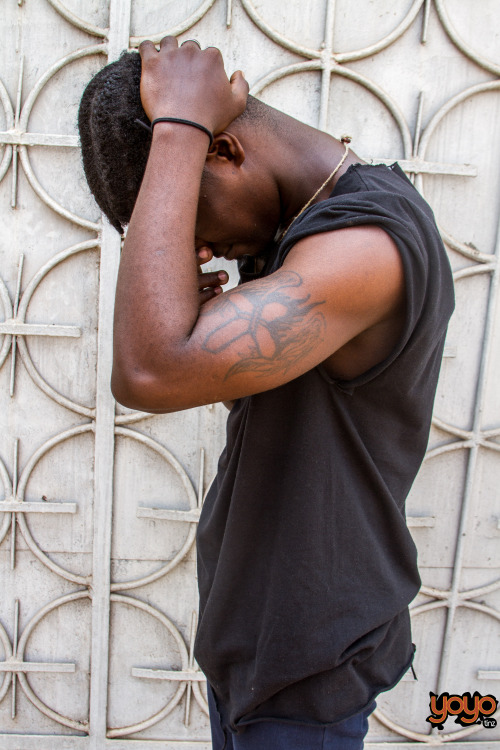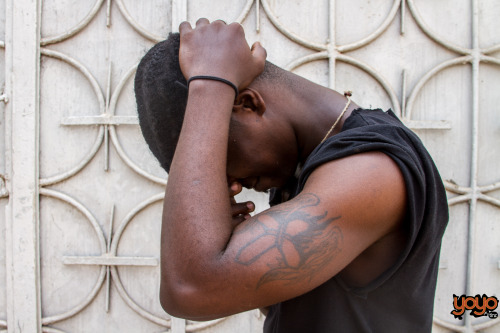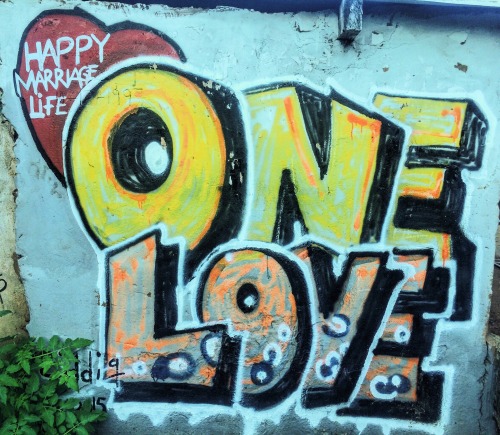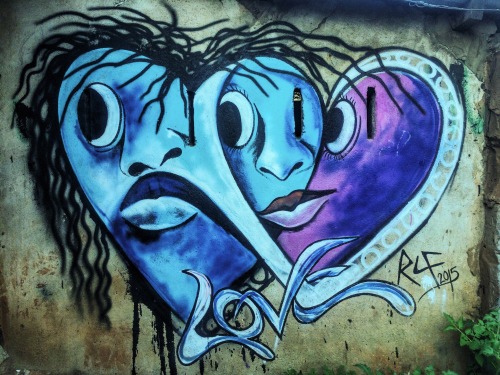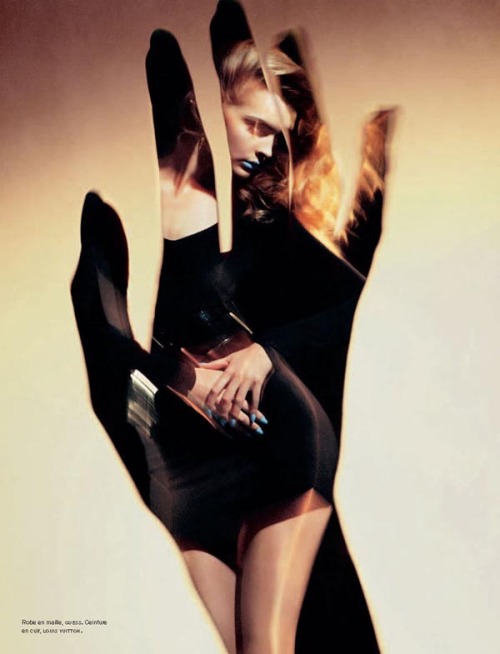#movement
“That is ‘I’m a legend‘written in Chinese.”
“The cross and the wings represent God and the angels guiding and protecting me, and the flames atop the cross means i’m on fire“
Post link
#StreetArtSaturday
This is the last street art for the month of love. Did you find love, make love, give love and did you enjoy ‘‘Oshun’’? The thing about love is you don’t need a special day, time or month to show love. So One Love people for the months ahead and beyond. Peace !!
ART WORK - found in Nima, Accra, Ghana.
Ceci est le dernier #StreetartSaturday du mois de l'amour. avez-vous trouvé l'amour, avez-vous fait l'amour, donné de l'amour et avez-vous profiter de notre mix “ Oshun”? Le truc c’est qu’il n’y a pas besoin d'une journée spéciale, d’un moment ou d’un mois pour célébrer l'amour. Donc, One Love pour les mois à venir et au-delà. Paix !!
OEUVRE D'ART - trouvé dans Nima, Accra, Ghana.
Post link

Upon asking anyone who has a fair idea who the FOKN Bois are to describe the duo in one word, you’re likely to get the response: Controversial; which is true, but the Bois are much more than just that. Other adjectives that could aptly describe the FOKN Bois are: witty, mischievous, creative, intelligent, political and of course, FOKN.
All of these are reflected in their music, films, album covers-at least on the cover for the group’s debut album, FOKN WITH EWE.
Speaking of FOKN Bois and covers, the group has apparently been criticised for “misogynistic depictions of African women” on the covers for Coz Ov Moni- The Remix EP and FOKN DunaQuest In Budapest. In a piece about them on Chimurenga’s The Chronic, the duo is quoted as responding to these criticisms:
“We also admire the minds and hearts of African women, but to depict those organs graphically would seem morbid. So we decide to depict what women shake in our eyes that attracts us the most and leaves visual imprints in our cortex. Bear in mind the thresholds of what one might deem misogynistic are relative. If we were hard-core Muslims making music and always using women’s eyes in our works we might soon be branded Muslim misogynists”
Back to the cover for FOKN WITH EWE, which was designed by Hanson Akatti; the cover contains quite a number of allusions to certain issues and situations- most of which were rapped about in songs on the album.
Below are six of the subtleties on the FOKN WITH EWE album cover which you may-or may not- have missed:
Two containers of bleaching cream: with one of each of the two bedside tables, these two skin bleaching creams-Milky Way and Brite is Rite- are the ones the FOKN Bois were referring to in the introduction of Track 5, “Want to be White.”
Two ‘Holy Books’ (the Bible and the Koran): these books are underneath the bed on which Wanlov and M3nsa were fucking with the ewe. It wouldn’t be far-fetched to conclude that it is from the Bible that they got all the information about Jesus’ coming which they shared on Track 3- Jesus is Coming, and from the Koran, they learnt of things like 'haram’ which they mentioned on track 12- Sexin Islamic Girls.
A FOKN KNEWESpaper: Lying on the floor of Wanlov’s side of the bed, this newspaper’s headline read “WOYOME AZONTO’s GHANA’s ECONOMY” (We all know this story…otherwise, Google: Alfred Agbesi Woyome.) On track 10 of the album, we learn that the FOKN Bois have a radio station- FOKN Radio. Add to that this newspaper of theirs, and we can only conclude that these Bois are really serious about spreading the FOKN gospel.
SPACE:Remember Tack 11 (Extra Terrestrial Sex), “having sex in space”? Well, they weren’t lying about that: looking through the window, you can see that this fucking session with the ewe is really taking place in space. And you can see the alien’s face too.
Two posters (on each side of the wall): One is of 'His Imperial Majesty’ Haile Selassie- listen to track 15, Rasta Fried Rice, and make your own connections. The other poster is of Bruce Lee- again, go and listen to track 6-Famous in China, and see if there are any dots to be connected.
Obama flyer: This is lying on the floor of M3nsa’s side of the bed. Remember Barrack Obama’s “YES WE CAN” campaign slogan? The FOKN Bois thought otherwise- and that is indicated on this flyer which has the inscription “NO U CAN’T OBAMA”. This is also hinted at by Wanlov on the album’s last song-Gimme Pinch.
Are there any other subliminals you may have caught?
(But wait …why is Wanlov -who normally doesn’t don footwear- wearing a pair of shoes in bed-of all places?)
So there you have it: if you missed (m)any of these, the moral of the story is this: 'consume’ anything produced by the FOKN Bois with open ears, eyes, hearts and minds.
NOTE: The FOKN Bois are hosting ‘The FOKN Party’ tomorrow night inside Alliance Francaise, at 7pm. Tickets will go for 20GHS at the gate, and there will be peformances by Efo Chameleon, Pappy Kojo, Joey B, Sister Debbie, Sena Dagadu and the Bois themselves. Visit the event page here for any info.
(Note: The terms “Black” and “African” are used interchangeably in this piece for contextualisation purposes.)
In 2001, Obrafour-arguably the most popular rapper in Ghana then- released his second album, Asem Sebe. On this album was the very popular love song, Odo. On Odo, Obrafour was basically professing his profound love for a certain Yaayaa Serwaa- a black woman, undoubtedly. (I would say ‘arguably’, but the video clarifies things.) In 2015, Sarkodiereleased his fourth album, Mary, and one of the numerous love songs on this album was ‘Always on my Mind’ (which incidentally featured Obrafour) and on it, Sark too was expressing his deep love for a black woman named Abena Amponsah. These two songs have a very curious and interesting thing in common: the rappers referring to these (black) love interests of theirs as white people, as a form of extollation and as terms of endearment- so we had Obrafour calling Yaayaa his 'white person’-mi broni, and Sarkodie calling Abena a 'black-white person’- tuntum broni.
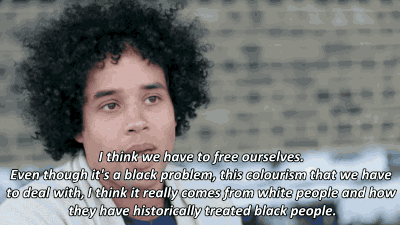
In attempting to make a case for this very worrying situation, someone once responded to these observations saying something like, “perhaps, they’re only using the (o)broni term figuratively,” and i retorted, “that is exactly the problem.”
That whiteness has to be called upon to validate the beauty of a black woman. That whiteness has to be the standard, the default, the epitome when we’re talking about beauty and admiration. That a beautiful black woman can’t be just that -a beautiful black woman- without being referred to as a ’(black)-white’ person.
The fact of the matter is that this most unfortunate phenomenon is deeply rooted in colourism, and much deeper in the colonial experience. Simply, it is the reflection of a colonial mentality to have Africans feel the need to use phrases such as “mi broni” and “tuntum broni” to extol their love interests, who’re obviously African. After all, wasn’t it during the colonial experience that we were taught that everything 'white’ was aspirational, admirable, to be desired, and everything 'black’ on the other hand, disdainful, repulsive and to be abhorred?
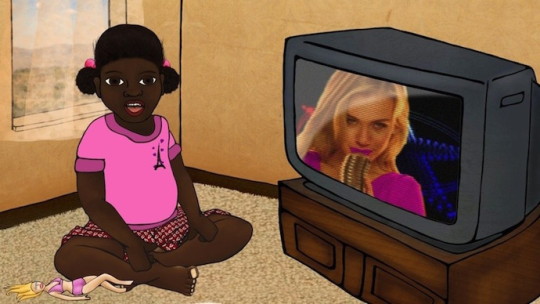
This colourist “broni” business is of course, not limited to rap-in fact, it is much more prevalent in highlife music. It is not even limited to the music scene, but actually spread across our whole society. (Isn’t our music generally reflective of our society?) But for the purposes of this blog, the focus will be on rap/hip hop music in Ghana.
In decrying this mentality that breeds acts such as skin bleaching, most of our rappers, in their token 'conscious’ songs, often miss the mark.
In an industry whose (biggest) voices still use such anti-black(skin) terms such as tuntum broni, in an industry where we’re most likely to have have light skinned women featuring in music videos, where musicians feel the need to brag about the fact that the woman they dating is biracial, in an industry that basically suggests that 'the lighter, the better’-and therefore reinforces colourist ideals, you do not go about barking at people who bleach their skins. However well-intentioned these efforts may be, there is nothing conscious about attacking people who in this case, bleach their skins. A deeper look at it though, would reveal something ahistorical and hypocritical, and everything unconscious, about it all.

If artistes feel the need to make socially conscious and progressive songs (which is a very laudable thing), it is imperative that they educate themselves and also attack, instead of victims, the underlying ideas or structures that lead to whatever malaise within society they’re disgusted at. Unconsciously being part of a problem you cry against, is not cool. Neither is victim blaming.
In ‘Anthills of The Savannah,’ the late Chinua Achebe wrote a wonderful proverb. It says that “if you want to get to the root of murder, you have to look for the blacksmith who made the matchet.”
(Note: the last two photos are stills from this brilliant short film that explores colourism. Highly recommended.)


Movement practice and flamenco flow


